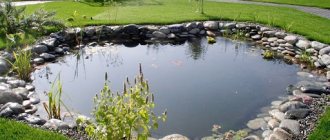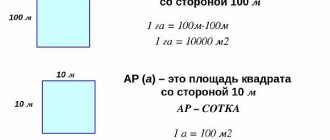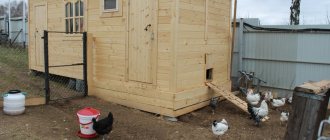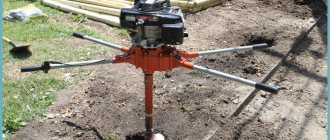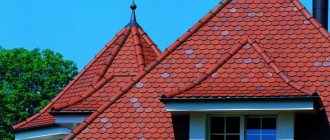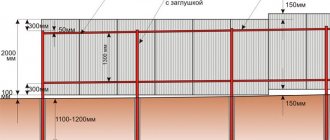There comes a time when all worries fade into the background, and a person thinks only about how to make a pond with his own hands. This usually happens while visiting, where the owner proudly shows off the pearl of the property, an artificial pond with goldfish, or after studying the profile section on FORUMHOUSE. Having your own pond greatly improves the quality of life: you can take a dip after a bath, cast a fishing rod and pull out a dozen fresh crucian carp for dinner, install an underwater camera and watch the life of the fish... Even a small decorative pond with water lilies and nymphs takes your summer cottage to a new level. In this article we will tell you how to create a pond at your dacha with your own hands and show successful examples from our users, with instructions and photographs.
A pond from the point of view of the law How to dig a pit How to choose waterproofing How to make a clay castle How to make waterproofing with film Examples of ponds from FORUMHOUSE participants Memo for the future owner of a pond
How to make a clay castle
To make a clay castle, you need to apply several layers of selected clay to the bottom of the pit. The total thickness of the castle should be at least 40 cm, this must be taken into account when digging a pit.
For such waterproofing, you can use only “fat” clay without the slightest admixture of sand. There is a home test for the fat content of clay: you need to slightly wet the clay, roll it into a tube and wrap it around a pencil or stick. If the clay does not crack, it is suitable for waterproofing a pond. Here is one way to waterproof a pond using clay:
- They dig a pit with an even gentle slope.
- Soot and lime are applied to the compacted bottom of the pit to repel worms;
- Dilute the clay with water to a paste consistency;
- Apply the first layer of clay approximately 15 cm thick to the bottom and walls of the pit; As the clay dries, compact it so that it sticks tightly to the ground.
- When the first layer has hardened well, but is not yet completely dry, apply a second layer of the same thickness, and when the second has dried, apply a third.
- When the clay castle is completely dry, pour crushed stone with a diameter of no more than 4 cm onto the bottom of the pit, compact it, and add a layer of sand.
- Such a pond needs to be filled with water only under low pressure.
MikeFORUMHOUSE Member
The labor intensity of the work on constructing a clay castle exceeds even the labor intensity of reinforced concrete work, and the water in such a pond will never be clean as a result.
When constructing a clay castle, the quality of the work is of decisive importance; if the clay layer is not “dented and smeared” well enough, the water will “find a hole and run away.”
Pit
Once the material has been selected, it is time to begin excavation work. It is best to do this in the summer, when the groundwater has receded as much as possible. The depth of the hole is calculated based on the material chosen as the basis. If this is a finished form or an old bathtub, dig a pit 20-30 cm deeper than the parameters of the container.
If you plan to build a pond made of PVC film, you will have to dig to a depth of about 80 cm, since the shallow reservoir will completely freeze in winter and quickly dry out in the summer heat. For ponds made of reinforced concrete, they dig a pit over one and a half meters deep - here you can’t do without special equipment.
Further in the article we will consider the stages of work on creating mini-lakes at the dacha for different types of selected materials.
How to make waterproofing film
Clay castles are rarely used; concrete, which does not withstand winter well, also loses ground: one type of film is most often used to waterproof a country pond. There may be the following options:
- LDPE, high pressure film. The most budget material, but the most fragile and short-lived. Although, depending on your luck, there are reviews on our portal about the long-term and impeccable service of this material.
- PVC film, stronger and more durable (service life 10-15 years);
- Butyl rubber film, the most durable, can last up to 50 years. Can stretch 2-3 times, used for waterproofing reservoirs deeper than 2-3 meters.
When choosing a material for waterproofing a pond, it is important that it is resistant to frost and ultraviolet radiation, is not afraid of mechanical stress and does not contain harmful additives.
- The length of the film is calculated using the formula: length of the reservoir + 2 depths + 1 m.
- The width of the film is calculated by the formula: width of the reservoir + 2 depths + 1 m.
In both cases, the meter is added in reserve, 50 cm on each side for the construction of an earthen castle.
Often people first look at what standard film sizes are on sale, and only then dig a pit for them. This is easier and cheaper than cutting and gluing pieces into a non-standard web. If gluing cannot be avoided, it must be done by specialists - it is almost impossible to achieve the desired quality of the seam on your own.
On a warm sunny day (at high temperatures the elastic properties of the film are enhanced) a layer of sand is poured onto the bottom of the pit, geotextiles are laid on it, and the film is laid on top. The edges of the film need to be secured with large stones, or it is better to make an earthen castle.
Sveta2609FORUMHOUSE member
A groove 15-20 cm deep is dug along the perimeter of the pond at a distance of 10 cm, the edges of the film are placed in it and sprinkled with soil, stones are placed on top or crushed stone backfill is made.
When the film has settled, the pit can be filled. There is another way - to lay the film while simultaneously filling the pit with water to control the smoothing of all wrinkles.
Ponds without additional waterproofing can still do without devices for additional purification: filters, streams, swamps, bioplateaus, etc., since the main water exchange in them occurs through groundwater. And if there is waterproofing, then you need a bioplate (filter) and a fountain, waterfall or stream for aeration.
DreiWFORUMHOUSE Member
Necessary and sufficient equipment for a pond with waterproofing is a pond pump that pumps water to the stream/plateau/swamp, and in winter we connect an aerator that will maintain an ice-free hole. But if there is some kind of fish in the pond, and not just crucian carp, they will survive without an aeration installation.
Decorating a pond with stones and plants is a must; without this, the pond will not look like a beautiful pond, but a dull puddle.
Decorating reservoirs
The construction of reservoirs also involves decorating them with plants and various natural and decorative objects. For this purpose the following are used:
Stones
. Natural material, looks impressive when wet. The use of stones with sharp edges is not recommended for safety reasons and to prevent damage to the insulation.
Natural wood
. Platforms, decking are used, and palisades made of rot-resistant wood are used to strengthen the coastline. Natural wood looks organic and aesthetically pleasing.
Plants
. Moisture-loving plants are used, which are planted along the coastline (irises, buttercups, forget-me-nots, aquilegias), and nymphaeal plants (lily, water lily, ondinea, barclay).
Specialists will take care of all the worries associated with the construction and landscaping of the pond, creating a highlight on your site that will decorate the area and become a distinctive feature and a source of pride.
